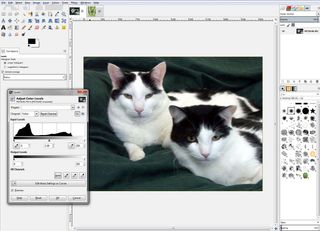

Invert your selection by pressing the keyboard shortcut Ctrl + I (or Command + I on a Mac).

Click once on a section of the background, and GIMP will automatically select all the pixels connected to it that are close enough in color to the pixel you clicked on. Switch to the Fuzzy Select tool using the toolbox, or press the keyboard shortcut U. This plant should be easy to cut out from the background with just a few clicks In my example picture of a carnivorous plant from my collection, the background is a nice bright white which will make the process very easy. Let’s dive in! Step 1: Making Your Selectionĭepending on the image you want to cut out, this step can be very easy or the most painstaking and time-consuming process. It comes up all the time, and it’s a great way to get used to the basics before you move on to more complex projects. There are lots of ways you can cut out an image, but let’s stick to the simplest method for this guide. The Detailed Guide to Cut Out Images in GIMP If you want to take a more detailed look at this and a couple of others ways to cut out an image in GIMP, then I’ll break the steps down in more detail below. Your results will depend on what tool you use in Step 1 to make your selection, and how careful you are to match the edges of your object. That’s the quickest way to cut out an image in GIMP! It doesn’t work perfectly for everything, but the basic principle is the same no matter what your image contains. Step 3: In the Layers panel, click the green-highlighted New Layer button to convert the floating selection into a standard pixel layer containing your pasted pixels. Step 2: Remove the selected object with the Cut command, and then use the Paste command to return it back to the image as a Floating Selection. Step 1: Switch to the Fuzzy Select tool, use it to select the image background, and then invert your selection. This image is now cut out from the original white background and is ready to be used in a composite or design project


 0 kommentar(er)
0 kommentar(er)
